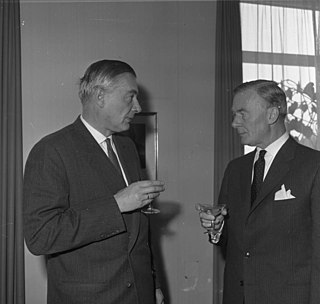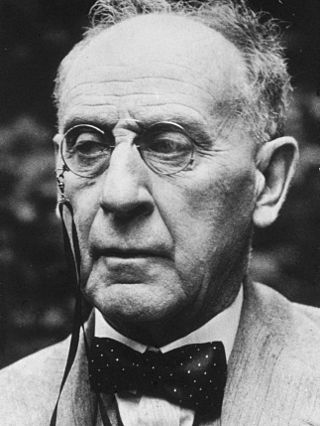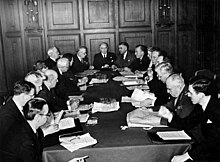
Escott Graves Meredith Reid, CC, was a Canadian diplomat who helped shape the United Nations and NATO, author, international public servant and academic administrator.

Count George Pavlovich Ignatieff, was a Canadian diplomat. His career spanned nearly five decades in World War II and the postwar period.

Canada in the Cold War was one of the western powers playing a central role in the major alliances. It was an ally of the United States, but there were several foreign policy differences between the two countries over the course of the Cold War. Canada's peacekeeping role during the Cold War has played a major role in its positive global image. The country served in every UN peacekeeping effort from its inception in 1948 until 1989. This resulted in Canada provided the greatest amount of UN peacekeepers during the Cold War.

Allan Ezra Gotlieb was a Canadian public servant and author who served as the Canadian Ambassador to the United States from 1981 to 1989.

The Norman Paterson School of International Affairs is a professional school of international affairs at Carleton University that was founded in 1965. The school is based at Richcraft Hall on Carleton's campus in Ottawa, Ontario, Canada. Students, alumni and faculty of NPSIA are referred to as 'NPSIAns'.

Norman Alexander Robertson, was a Canadian diplomat and was one of Prime Minister Mackenzie King's advisers.

Geoffrey Arthur Holland Pearson was a Canadian diplomat and author. He was the son of former Prime Minister of Canada Lester B. Pearson and Maryon Pearson.
George Norman Hillmer is a Canadian historian and is among the leading scholars on Canada–US relations.

Oscar Douglas Skelton was a Canadian political economist and civil servant. Skelton was a loyal member of the Liberal Party, an expert on international affairs, and a nationalist who encouraged Canadians to pursue autonomy from the British Empire, and to take on what he proclaimed was "the work of the world."
John Benjamin Clark Watkins was a Canadian diplomat and scholar who served as Canadian ambassador to the Soviet Union from 1954 to 1956. Describing Watkins as "sophisticated, erudite and fluent in Russian", Michael Dobbs of The Washington Post wrote that he was the "perfect ambassador" to Moscow. He is credited with organizing a historic meeting between Soviet Premier Nikita Khrushchev and Canadian External Affairs Minister Lester B. Pearson.

George MacKinnon Wrong was a Canadian clergyman and historian.

Egerton Herbert Norman was a Canadian diplomat and historian. Born in Japan to missionary parents, he became a historian of modern Japan before joining the Canadian foreign service. His most influential book was Japan's Emergence as a Modern State (1940) where he argued that persisting feudal class relations were responsible for government oppression at home and the imperialistic expansion that led to World War II in Asia. During the Red Scare of the 1950s Norman was accused of being a communist or even a spy, though investigations found no corroboration and he was defended by Canadian authorities. He committed suicide in 1957.
Lieutenant General Maurice Arthur Pope, was a Canadian Army officer, civil engineer, and diplomat.

Canada has been a member of the North Atlantic Treaty Organization (NATO) since its inception in 1949.

Lester Bowles Pearson was a Canadian politician, diplomat, statesman, and scholar who served as the 14th Prime Minister of Canada from 1963 to 1968.

Maclaren Cemetery is a small cemetery in the town of Wakefield, Quebec and the final resting place for Prime Minister Lester B. Pearson. Established near the 1870s, the cemetery is located in the clearing below the hills bordering the Gatineau River and is the resting place for Scottish settlers in the area.
Dennis Hume Wrong was a Canadian-born American sociologist and emeritus professor in the Department of Sociology at New York University.

Edward Murray Wrong was a Canadian-born historian, vice-president of Magdalen College, Oxford (1924–25).
The foreign policies of Canada and its predecessor colonies were under British control until the 20th century. This included wars with the United States in 1775-1783 and 1812–1815. Economic ties with the U.S. were always close. Political tensions arose in the 19th century from anti-British sentiment in the U.S. in the 1860s. Boundary issues caused diplomatic disputes resolved in the 1840s over the Maine boundary. and early 1900s, in the early 20th century over the Alaska boundary. There is ongoing discussion regarding the Arctic. Canada-US relations have been friendly in the 20th and 21st centuries.















